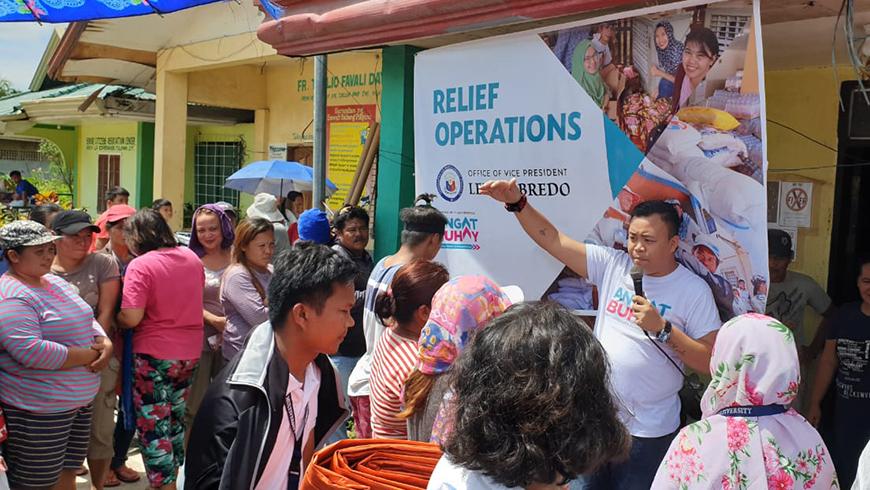Teachers as frontline disaster responders

In my years of working in disaster risk reduction and management (DRRM) across the Philippines, it’s often been teachers I’ve engaged with the most—not only because schools are frequently turned into evacuation centers during emergencies, but also because teachers are among the first to respond.
I’m reminded of Ma’am Daday and Ma’am Imee, two of my dearest co-teachers from the Siargao Islands when I was a Teach for the Philippines (TFP) fellow. After Super Typhoon Odette (international name: Rai) struck in 2021, communication lines were down. Roads were blocked. But they somehow found a way to send us photos of our school—flooded, roofless, but still standing. Amid their own losses, they went back to check on the classrooms. Not out of routine or requirement—just that deep, familiar instinct and knowledge that our learners will come looking for this place.
In the Philippines—a country hit by over 20 tropical cyclones each year, with recurring earthquakes and volcanic eruptions—this isn’t unusual. It’s what we’ve come to see time and time again with the Philippines ranked the most at-risk country by the World Risk Index for the past 16 years.
Thousands of schools are located in high-risk areas. And in many communities, the school is not just a place to learn—it becomes a shelter or a place to begin again.
When disaster strikes, it’s often teachers who respond first. Before aid agencies arrive, before humanitarian systems kick in, teachers are already checking for damages, accounting for students, providing psychological first aid, and finding ways to restart routines—not just to resume learning, but to help restore a sense of normalcy. They work with fellow teachers, parents, and students to figure out what needs to be done and how to move forward. It’s a kind of leadership that is shared and rooted in the community.
What makes this even more powerful is that teachers are already doing so much. In the Philippines, teachers often juggle overloaded class sizes, multiple extracurricular roles, administrative tasks, and community responsibilities. And still, during emergencies, I’ve seen countless teachers step up. Not because it’s written in their job description, but because they carry a deep, personal commitment to their learners.
But willingness should never be mistaken for capacity. Teachers cannot—and should not—bear this responsibility alone.
I think it’s time to formally recognize what’s already true on the ground: teachers are part of the first response in emergencies, especially in school settings.
Because showing up isn’t the same as being supported. And caring isn’t the same as being equipped.
If we expect teachers to keep stepping into this disaster response role—and they will, because they always do—then we owe them the tools, the training, and the systems that make it possible to carry that responsibility without burning out.
In the Philippines, we’ve begun to recognize and prepare teachers for this frontline role—though of course there is still more to do. For example, public schools conduct quarterly earthquake and fire drills to help both learners and staff respond swiftly during emergencies. Each school appoints a staff member to be their designated DRRM coordinators, supported by annual school-based DRRM planning that’s integrated into the broader school improvement process. Disaster risk reduction is taught across subjects like Science and Araling Panlipunan (Social Studies), embedding important skills and a culture of preparedness among students and teachers early on.
Initiatives like Brigada Eskwela—once focused solely on school cleanups—have evolved to include risk assessments and safety measures, often led by teachers themselves. Many educators across the country have also undergone Rapid Damage Assessment and Needs Analysis (RDANA) training, equipping them to assess school conditions post-disaster. Others are trained in basic psychosocial support, helping them care for students in distress and create trauma-informed learning spaces. When needed, Temporary Learning Spaces (TLS) are quickly set up to resume classes in the wake of destruction.
These inspiring efforts and examples show what’s possible when we see schools not only as places to teach—but also places to protect. But none of these systems work without the people who carry them forward. And crisis after crisis, it is teachers who stand at the center.
It’s important to remember that teachers bring their own lived experiences to all they do. They themselves have been personally impacted by typhoons, floods, volcanic eruptions, pandemics, among others—and they’ve rebuilt not just classrooms, but communities.
As the world faces growing climate risks and conflict-related crises, other countries can learn from how Filipino teachers have stepped up—not just as educators, but as frontline responders.
What if every education system was designed not just for instruction, but for protection?
What if every teacher was trained not only to teach—but to lead in moments of uncertainty?
What if we reimagined teacher training to include preparedness, and designed education systems with crisis at the margins and resilience at the center?
Because when emergencies strike schools, it’s always teachers who are there first.
And when learning resumes, it’s often because a teacher made it possible.
So let this be an invitation.
To ministries of education, humanitarian actors, training institutions, and global partners:
Recognize, equip, and support teachers as frontline responders. Because safe schools don’t start with walls or systems—they start with people. And the people at the heart of our schools are teachers.
To the broader Education in Emergencies (EiE) community:
Whether you're designing policy, coordinating EiE response, training future educators, or advocating for resources—let us not overlook the role of teachers. Center them. Listen to them. Prepare them.
Because the future of crisis-resilient education does not lie solely in frameworks or facilities. It lies in how we support the people who never stop showing up—our teachers.